Class I Prep Variations in Medicine Terms & Definitions
1/58
There's no tags or description
Looks like no tags are added yet.
Name | Mastery | Learn | Test | Matching | Spaced |
|---|
No study sessions yet.
59 Terms
class 1 outline form determinants
1. anatomy
2. extent of enamel involvement by caries
3. lateral spread of caries along the DEJ
what is not a determinant of class 1 outline form?
depth of caries
max anterior class 1 prep outline form follows
lingual pit + defect (lots of variation in lateral incisors)
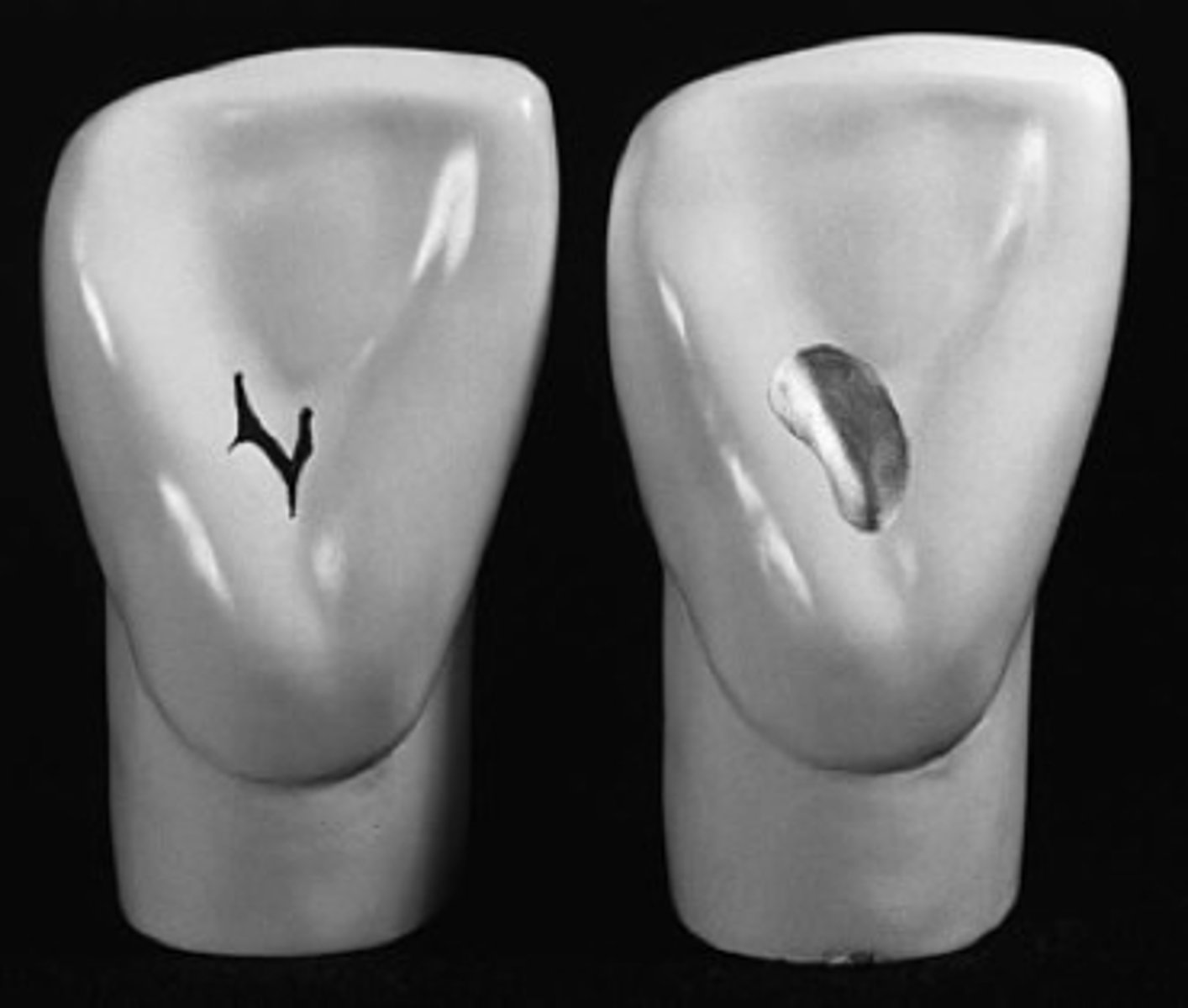
anterior class 1 prep outline form shape, where is apex?
rounded triangular

rounded triangle max anterior class 1 prep outline form apex is located ___ and sides located ___
apex = in pit
sides = mesial/distal marginal ridges
anterior class 1 prep outline form wall angulation
parallel or slightly convergent
anterior class 1 prep axial wall should be ___ to external tooth surface to avoid ___: how?
parallel
pulpal exposure
Orient bur perpendicular to lingual surface, not parallel to long axis of tooth
anterior class 1 prep outline form total depth
1.5mm
any deeper may jeopardize pulp
what tooth has the largest occlusal table of all teeth?
max 1st molar
do max and mand molars have the same anatomy?
no... therefore different prep techniques are needed
oblique ridge molar
preserve this on 1st max molars!
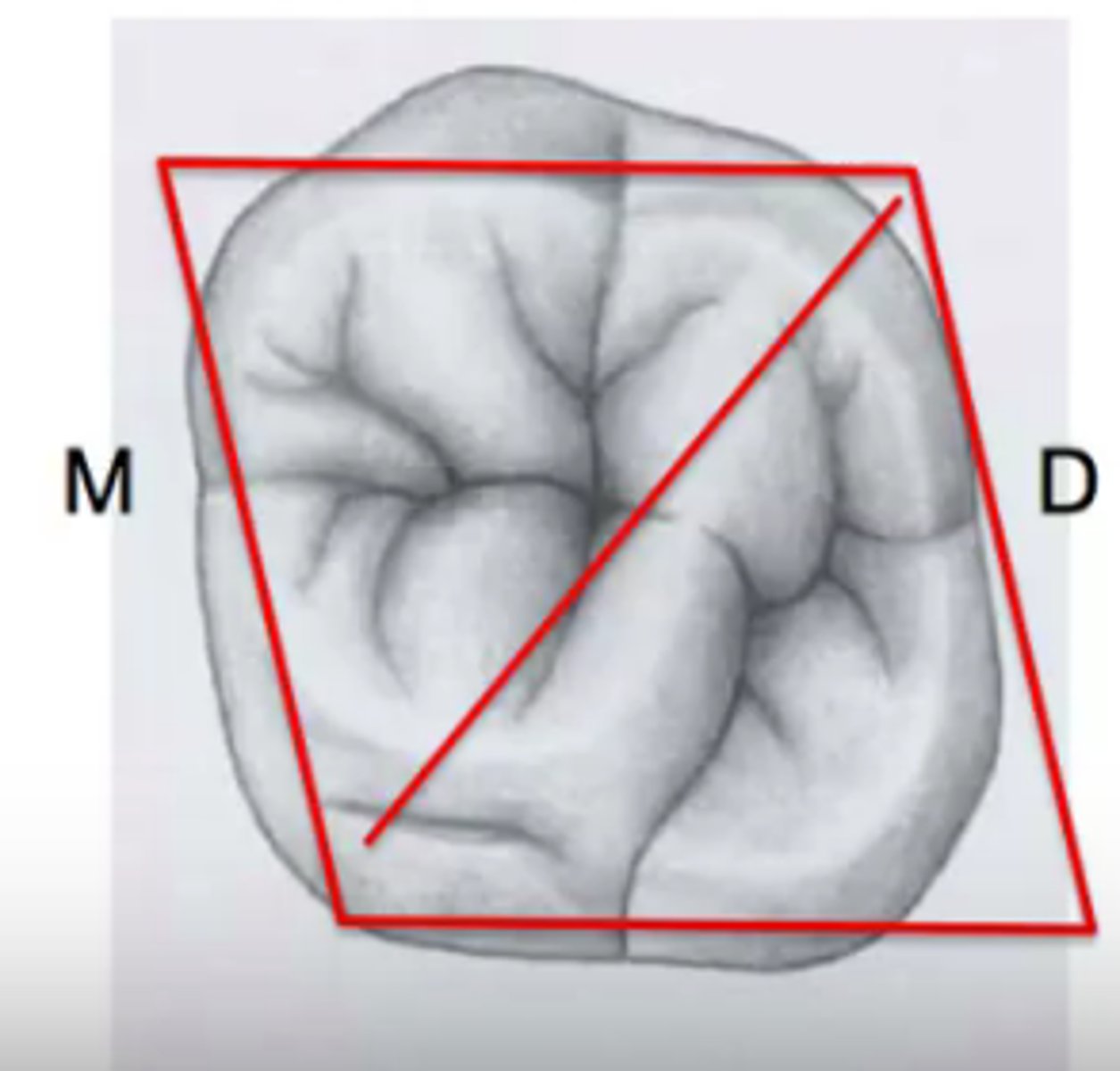
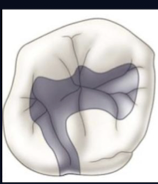
max first molar: occlusolingual
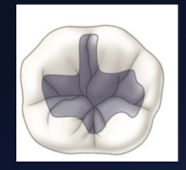
man first molar: occlusofacial
for max molars class 1 preps, to preserve oblique ridge, marginal ridges, and cusps, extend ___ into all cusps
1/4 way up
what is the only part of a class 1 max prep that is extended 1/3-1/2 (instead of 1/4)?
buccal developmental groove
max molars mesial/ central pit caries characteristics (other than extensions + MMR/oblique preservation)
- "butterfly" appearance
- include all of central developmental groove (center to mesial pit)
- include mesial triangular fossa
max molars distal pit caries characteristics (except extensions + DMR/oblique preservation)
- include distal pit and affected portion of groove
- cavosurface parallel
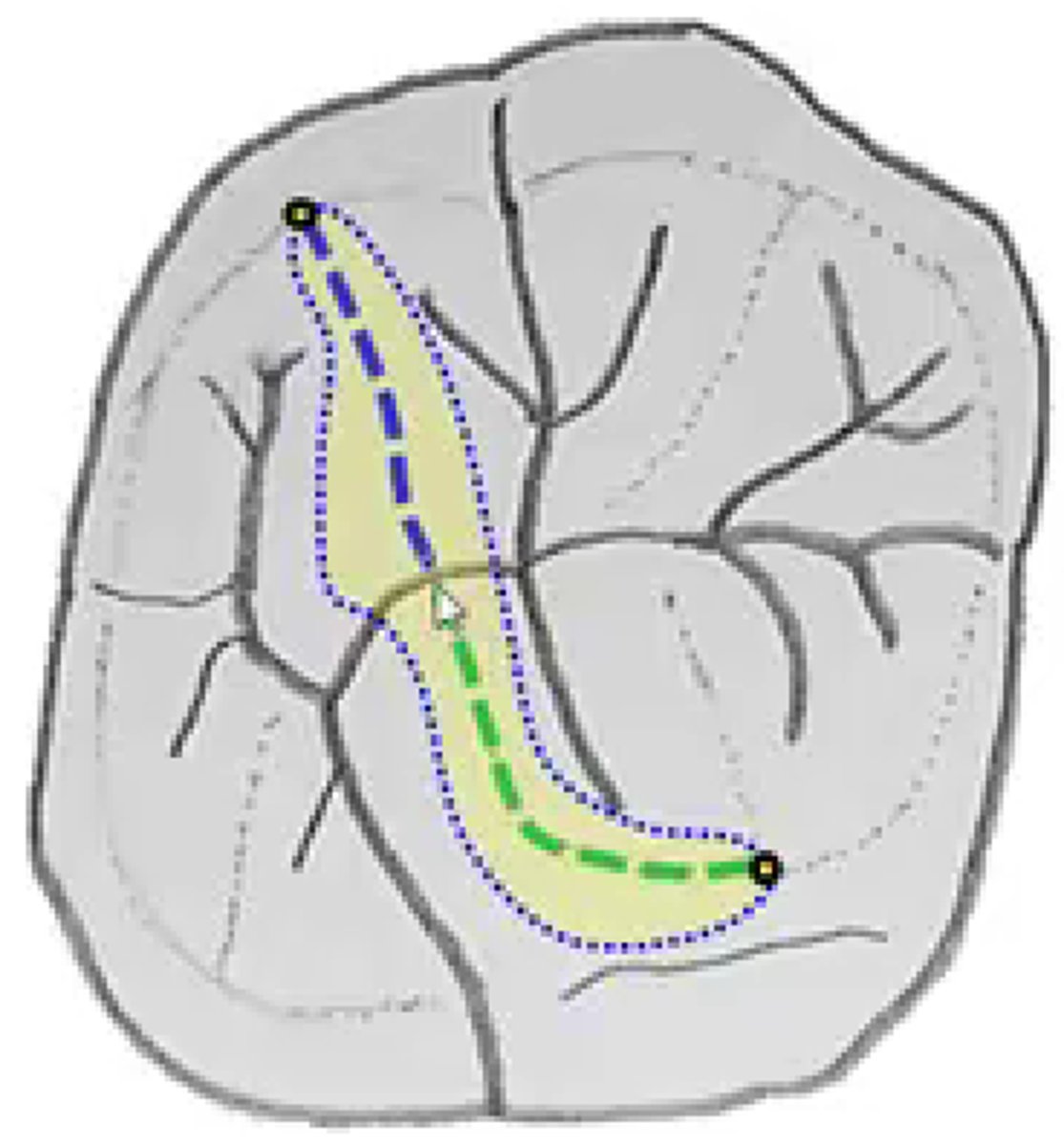
class 1 max molar lingual caries outline form shape + locations
shape = elliptical
locations = lingual pit
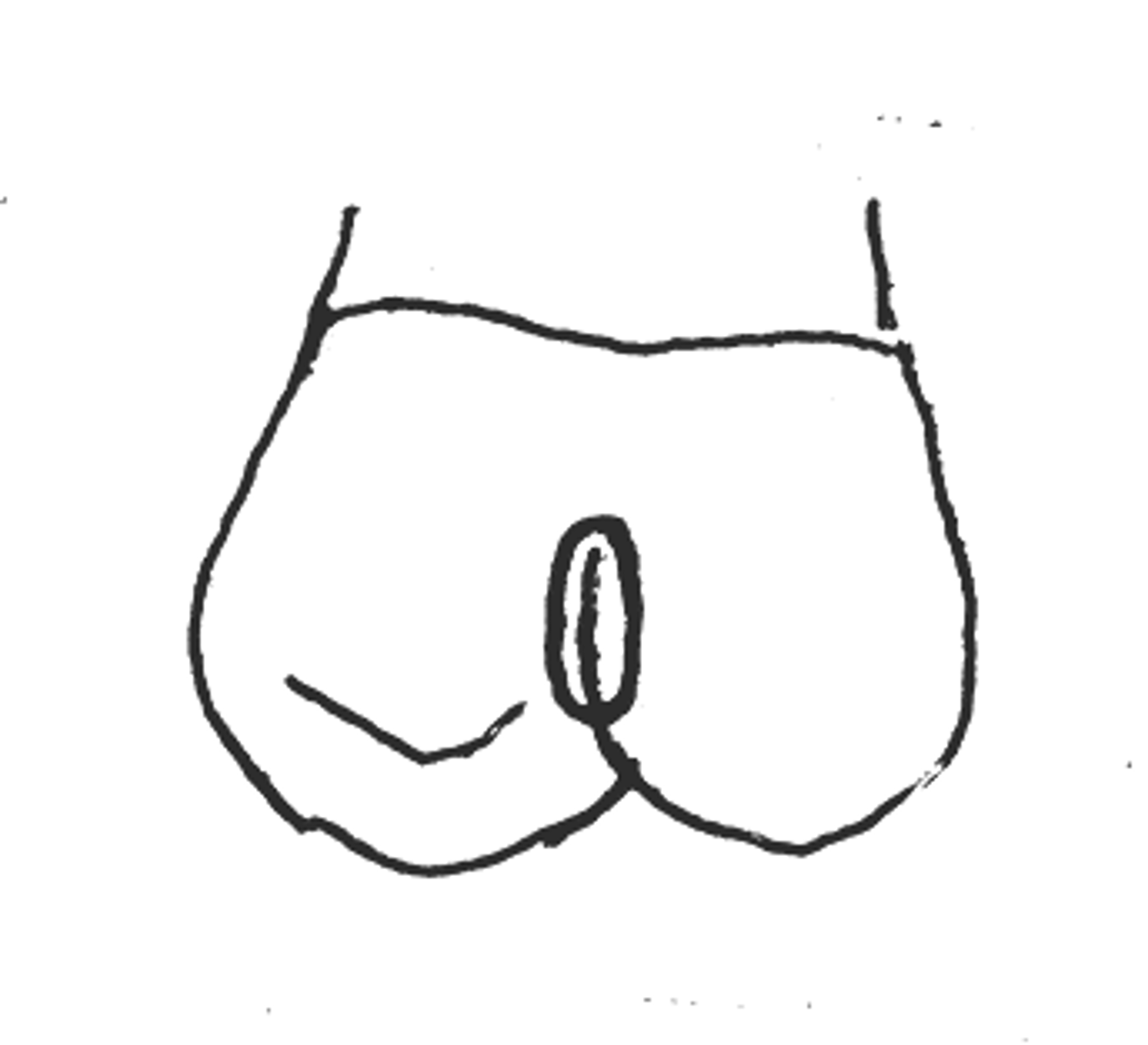
lingual portion of max OL prep should terminate
just gingival to lingual groove
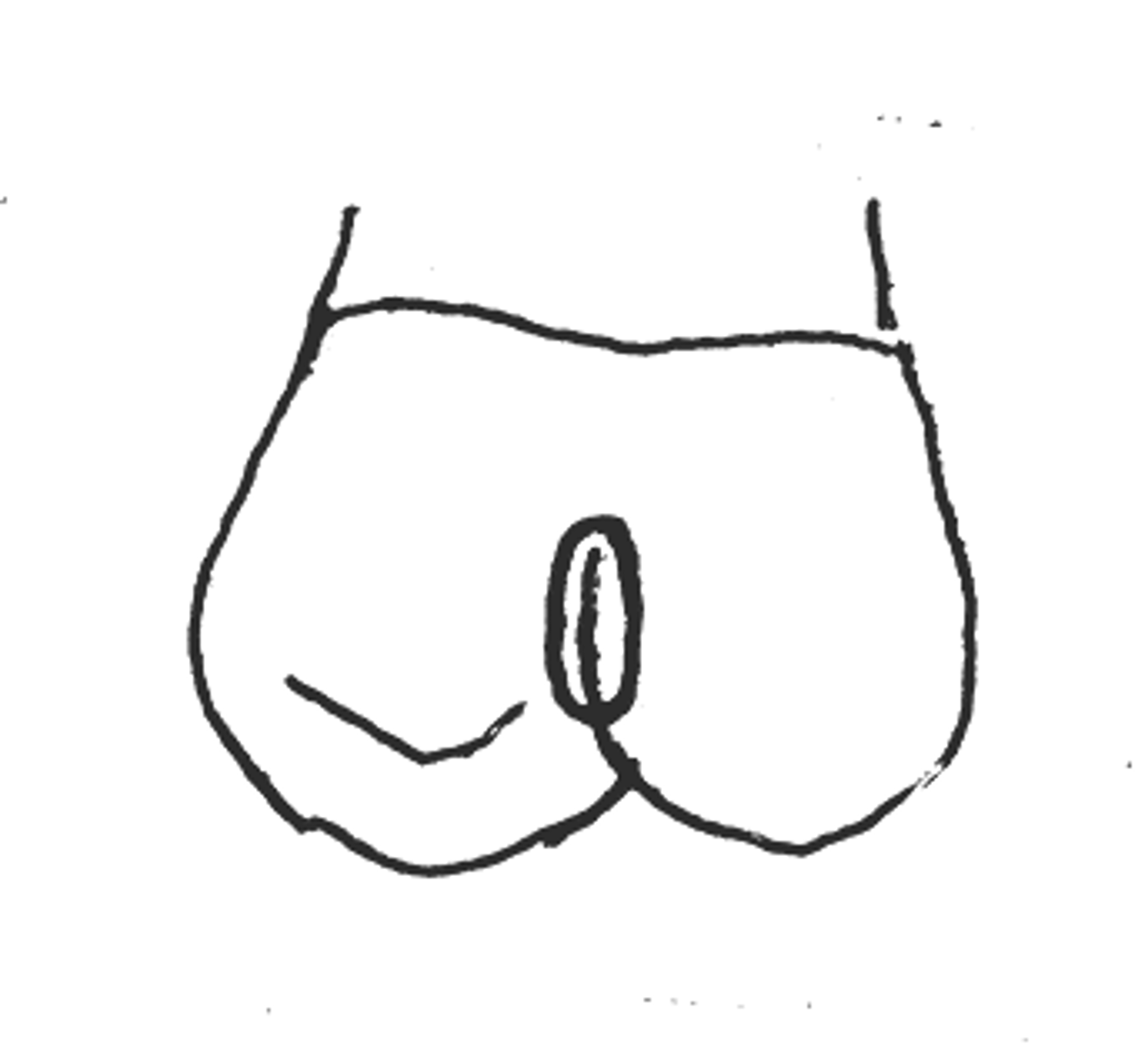
should mesial/central and distal outline forms be connected for maxillary molars?
no
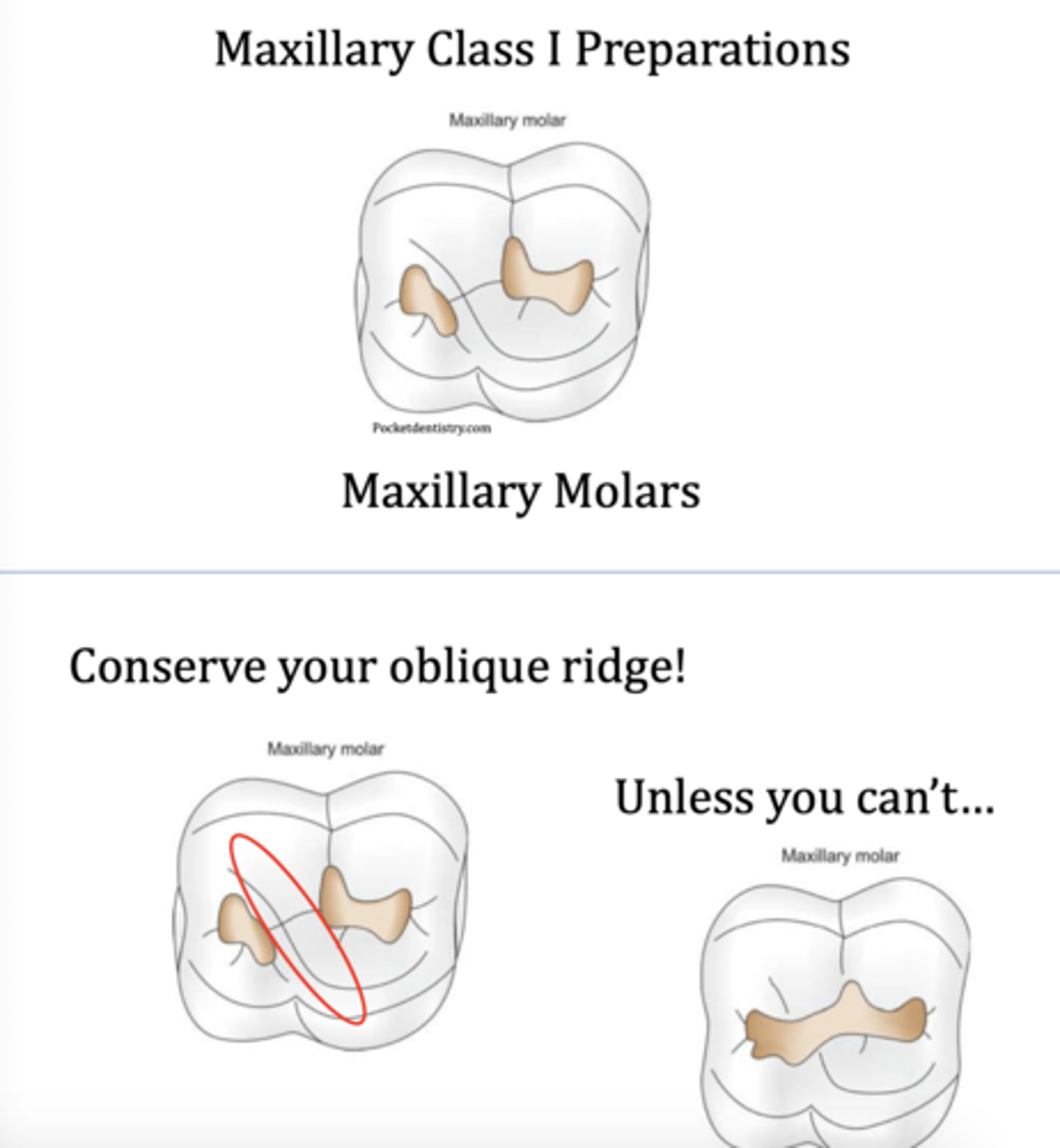
should distal and lingual outline forms be connected for maxillary molars?
yes
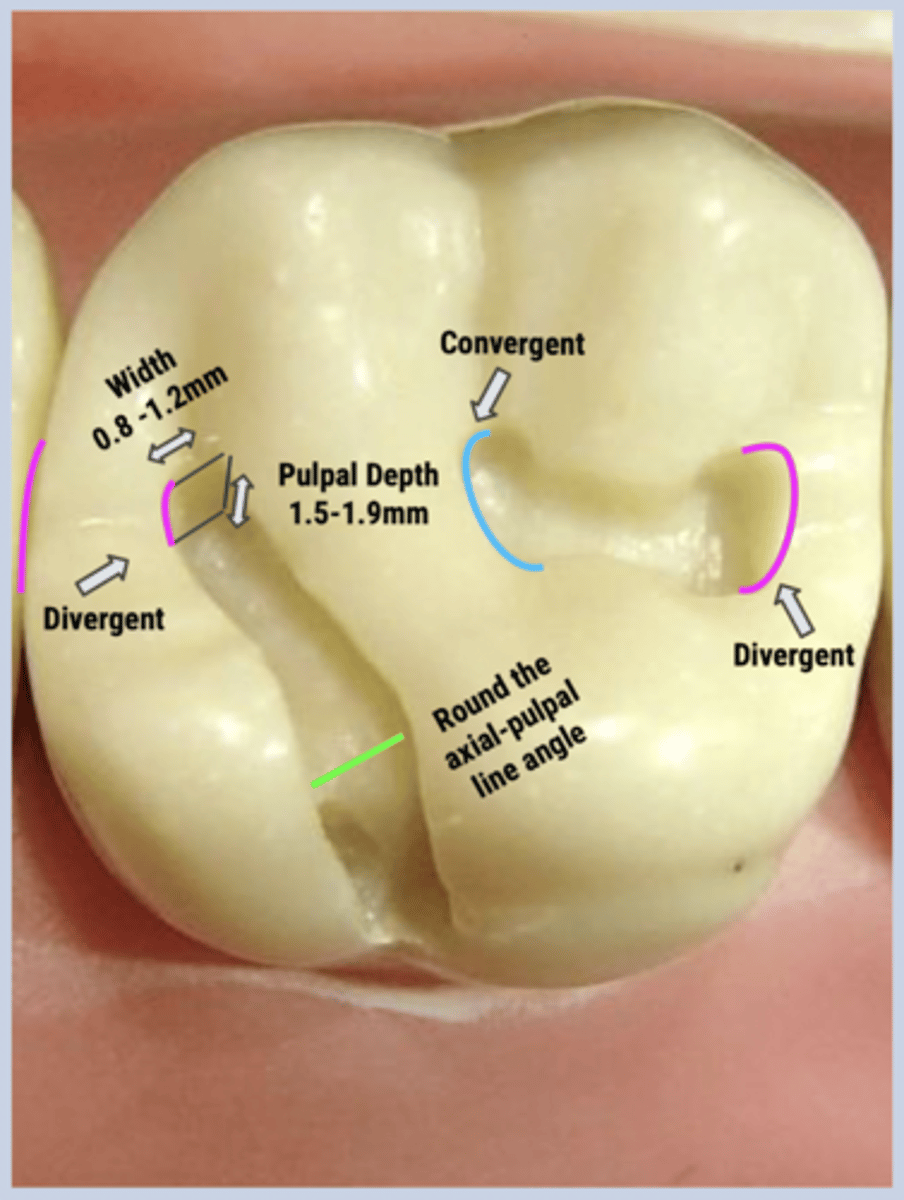
why should distal and lingual outline forms be connected for maxillary molars?
because the groove that connects them is involved
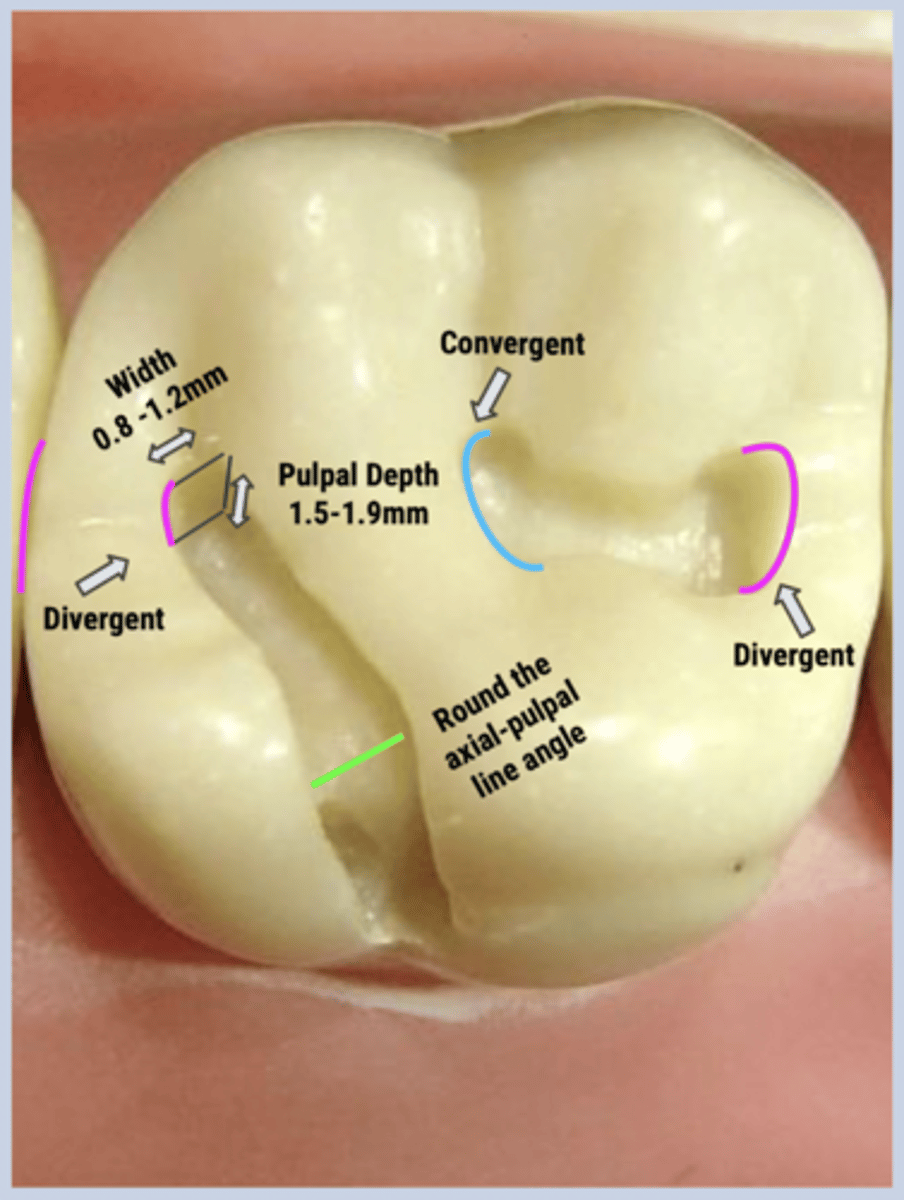
OL class 1 is indicated when what 3 things connect?
1. lingual fissure
2. distal oblique fissure
3. distal pit
maxillary OL class 1 preps must
respect the oblique ridge
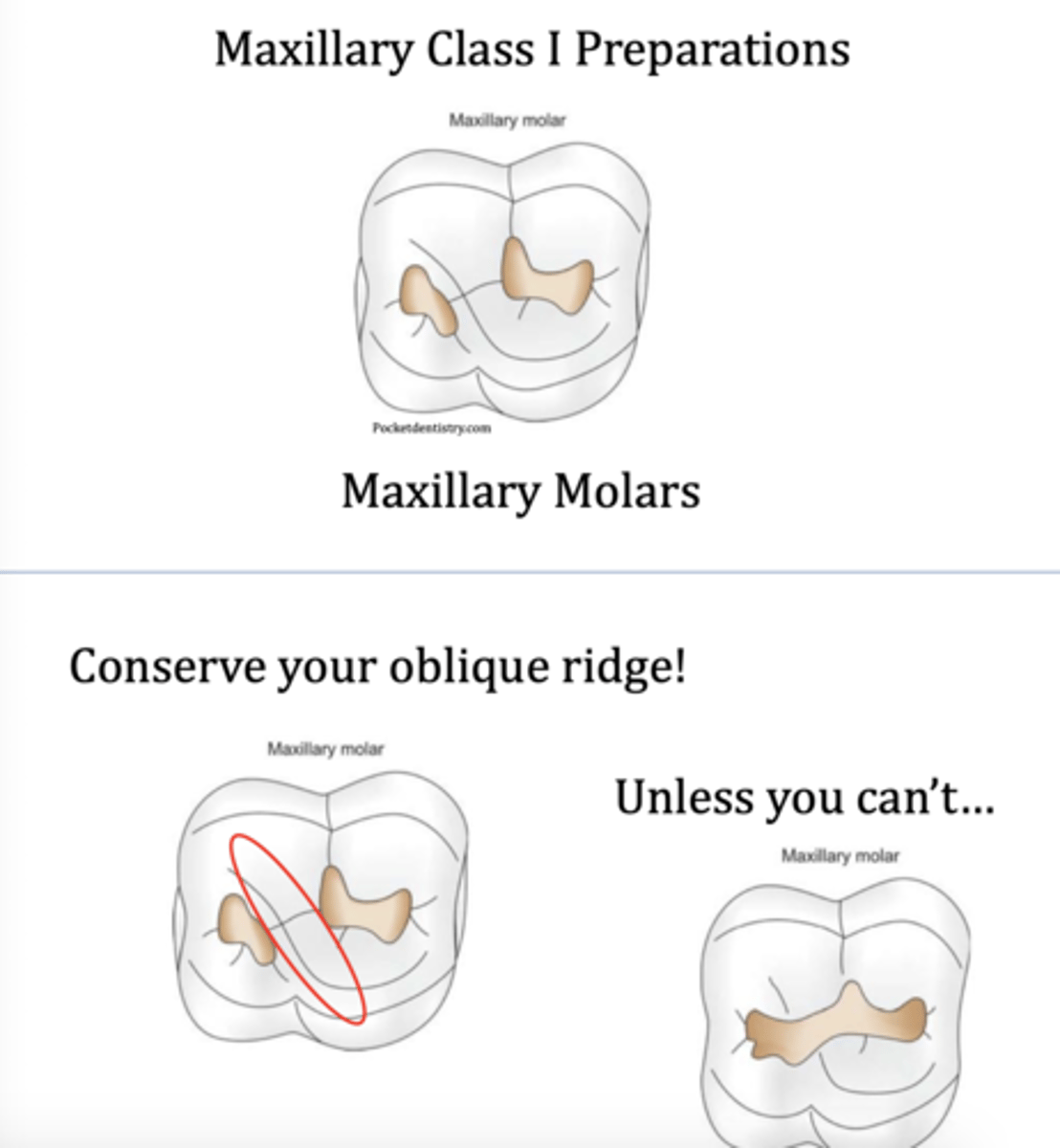
isthmus definition for class 1 OL prep
mesiodistal width of lingual extension
*essentially the straight part of the prep that connects the distal and lingual pits

isthmus width of lingual extension is always ___ unless you need to ___
1mm
remove caries/ undermined enamel
should prep include oblique ridge, buccal cusp, or fissure if some have to be included? why?
remove oblique ridge and buccal cusp if needed (preserve fissure + be slightly mesial to distal oblique fissure)
removed fissure = weakens DL cusp (want to avoid)
aka be more mesial rather than more distal w/ prep
occlusal portion of class 1 OL prep has a slight ___ inclination to conserve ___ which supports the ___
distal
dentin support
distal marginal ridge
O portion of class 1 max OL mesial, distal, and buccal walls
buccal = convergent
mesial = convergent
distal = divergent
L portion of class 1 max OL mesial and distal walls
mesial = convergent
distal = convergent
which wall is different between L and O portion of OL max molar prep? how so?
distal wall
L = convergent
O = divergent
prep design max molar OL characteristics
- smooth walls
- mesial + buccal walls converge
- distal wall diverges occlusally (rest is convergent)
- isthmus width 1mm
isthmus should ___mm wide and be able to fit the ___ but should be as conservative as possible
1mm
nib of a condenser
inclination for class 1 max OL groove prep
occlusal distal inclination
occlusal portion of OL max molar prep should be more ___ to the distal pit (__:__ not __:__)
mesial
70:30 (ideal)
50:50 (avoid)
OL max molar prep depth at distal pit
1.5mm (1.75-2mm from walls of prep)
OL max molar prep axial wall depth
1.0mm (width of isthmus on lingual surface)
lingual portion of OL max molar bur angulation and tip placement
bur = parallel to lingual surface or slight distal tilt
tip = at gingival end of lingual fissure
lingual portion of OL max molar axial wall follows the contour of
lingual surface of tooth

is the lingual portion of OL max molar axial wall concave or convex?
convex
lingual portion of OL max molar mesial and distal walls are
convergent
lingual portion of OL max molar has ___ axiopulpal line angle
rounded
lingual floor during an OL prep must follow ___ in order to ___
cuspal incline
maintain proper pulpal floor depth
class 1 proper pulpal depth
1.5mm (0.5mm into dentin)
class 1 OL prep pulpal vs axial depth
pulpal depth = occlusal depth = 1.5mm
axial depth = lingual width = 1.0mm
what dictates differences in outline form/ extension for max OL preps?
anatomy
what should always be preserved with max molar OL preps?
oblique ridge
if caries are present in mesial and distal occlusal pits but the oblique ridge in unaffected
do two DISTINCT prep (not connected) to preserve the oblique ridge
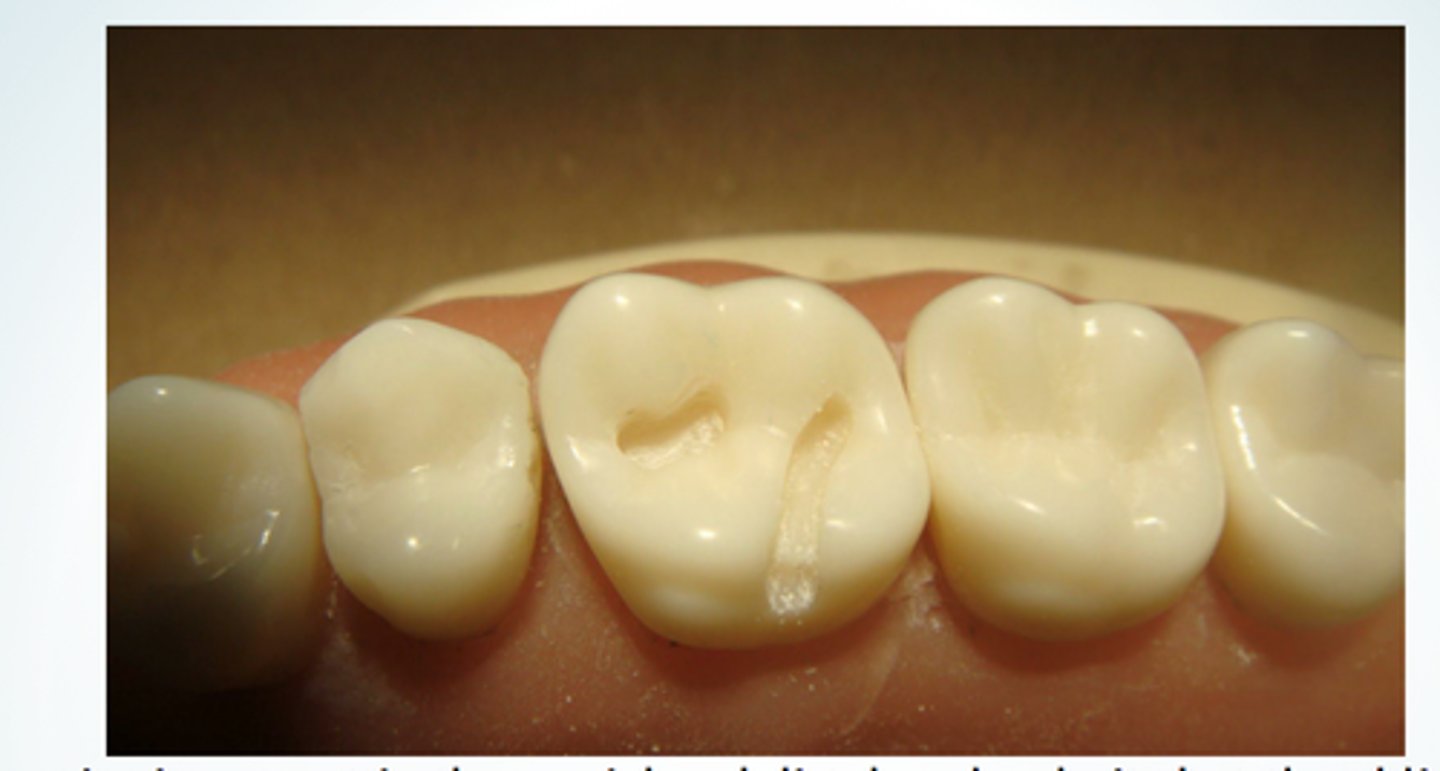
buccal portion of OB class 1 mand molars prep will be ___ shaped and should include the ___
round or elliptical
buccal pit
class 1 OB mand molars should combine ___ because ___
occlusal and buccal pit preparations
groove between them is affected
buccal portion of mand molar OB class 1 prep walls
parallel or slightly converging
what parts of OB prep mand molar need to be self-retentive?
BOTH O and B portions
for mand molar OB prep walls, you must ___ or ___ the axio-pulpal line angle
round
bevel
is step from occlusal to buccal in mand molars or occlusal to lingual in max molars more prominent?
occlusal to lingual in max molars
only extend ___ of oblique ridge height to preserve it
¼
only extend ___ of MB + ML cusps and marginal ridge to preserve it
¼
extend ___ of buccal developmental groove
⅓-½
mesial and distal cavosurface should be ___ to their respective ridge in an OL max prep
parallel
lingual portion of OL prep has retention mainly from ___ but ___ can be placed if needed
frictional resistance
retention grooves in lingual extension